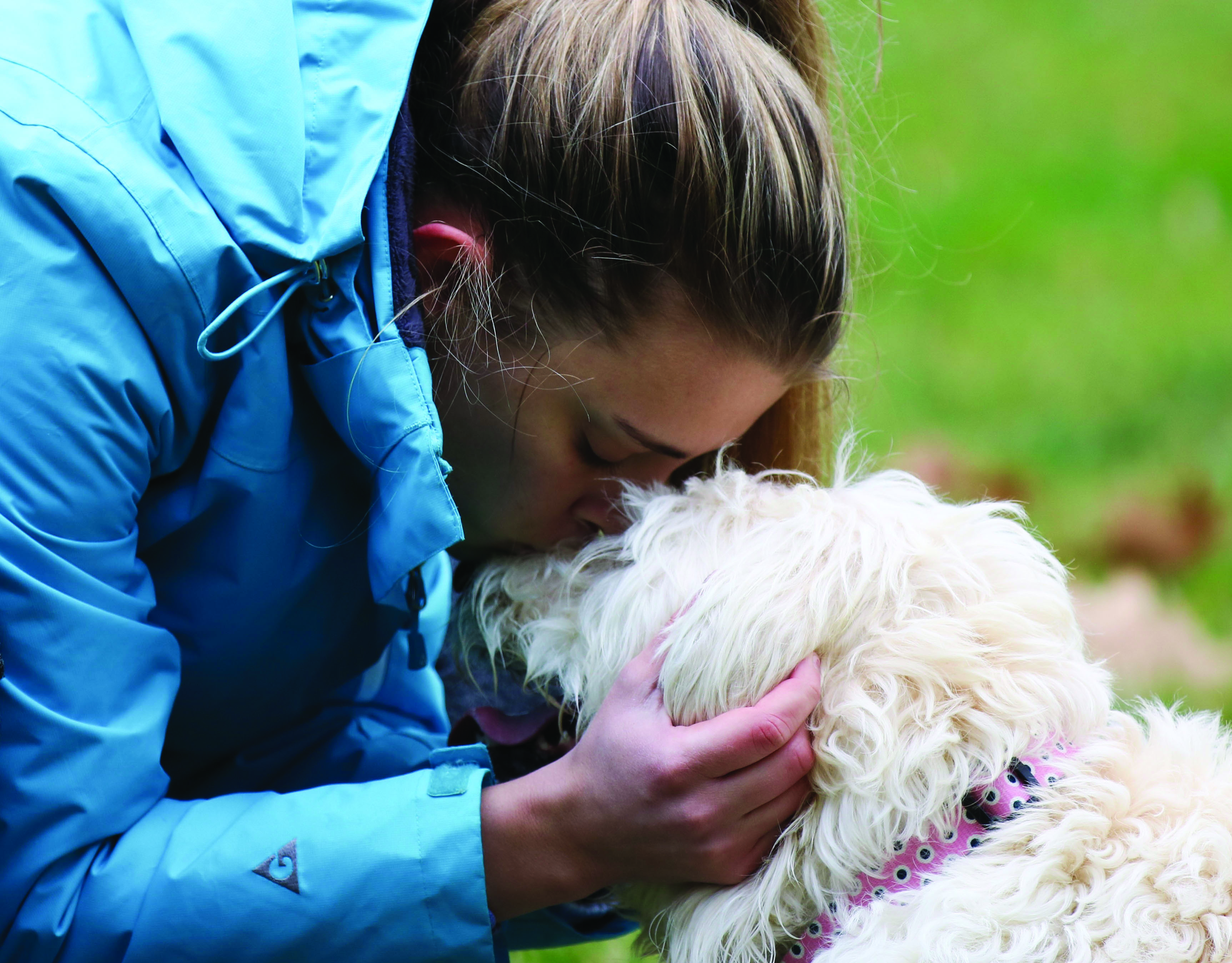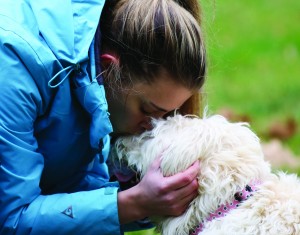
by J.T. Buchheit
News editor
jbuchhei@jccc.edu
Most students have to wait until they get home to experience the enthusiastic greetings of their dogs, but some people are allowed to have their dogs on campus. However, for these students, having their dog at school with them isn’t just a perk — it’s a necessity.
“A person that has a disability is the person that would have a service animal,” said Access Services Adviser Holly Dressler. “So that animal assists them with some kind of task that they need, [which] could be anything from getting a book out of a backpack, or it could be guiding a person. Usually the most common service animals you see are ones with a person that has some kind of vision impairment, so that would be assisting a person with their environment, getting from one place to another.”

In addition to helping their owners with physical tasks that the person would have a difficult time doing own their own, service dogs can also be trained to assist those who struggle with certain medical conditions.
“We have other service animals that do some kind of other task,” said Dressler. “It could be alerting someone that they’re about to have a seizure, and I’ve known service animals that can sense when a person’s blood sugar gets a little off.”
Cele Fryer, a student at the college, has a service dog named Maggie Rose, a five-year-old labradoodle whom Fryer has had for about two-and-a-half years. Fryer is an epileptic, and Maggie Rose is able to detect when she is about to have a seizure.
“[When I’m about to have a seizure], she picks up a certain scent that I give off, and she starts barking and going crazy to alert me,” said Fryer. “Then she’ll actually lay down on top of me.”
Although dogs are by far the most widely used service animals, they aren’t the only ones that can be trained to perform such tasks.
“Small horses were allowed for a while,” Dressler said. “It used to be that a service animal could be a lot of different things, but in the [Americans with Disabilities] Amendments Act, they provided more clarification so that now it’s only a dog or a small pony.”
According to the ADA, service animals are not required to be professionally trained, but they need some sort of training in order to be able to do what a person needs of them. Thus, they must behave exceptionally well.
“When a service animal is working, they are really focused on the task at hand,” said Dressler. “I think the big difference [between them and normal dogs] is their temperament and the training that dog has gone through in order to perform that task.”
Because these animals also live with their owners as well as help them outside of the home, many owners form very strong bonds with the animals they depend on.
“[Maggie Rose] has given me back my sense of independence and brought joy, love and friendship into my life,” said Fryer. “I don’t know where I’d be without her.”





















